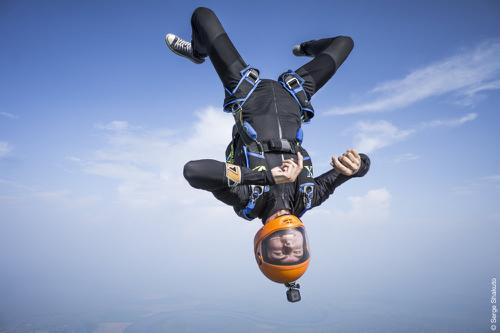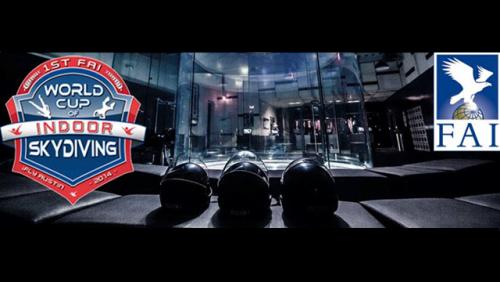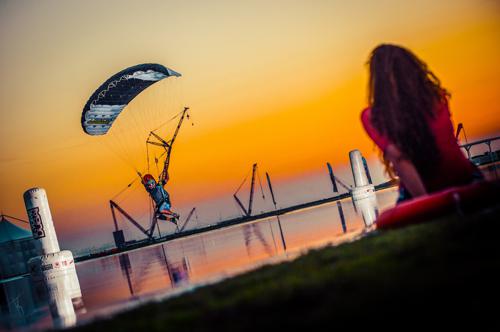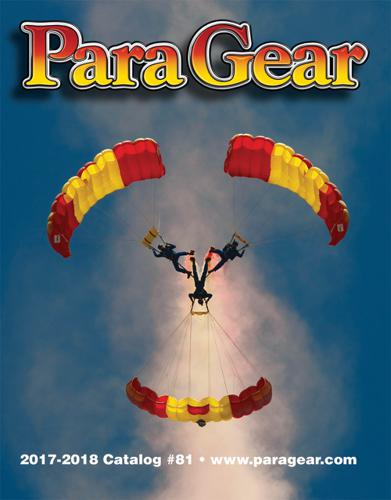Load Organizing Basics
Image by Serge Shakuto
Relying on the default method is unsatisfying because you may find yourself being the only ‘experienced’ jumper on a load of tandem pairs and AFF students, the odd skydiver on an aircraft with an organized group that you haven’t been invited to join, or one of a few miscellaneous jumpers. In any case, you’ll probably end up with limited choices: punching a hole from 14,000’ or attempting to put together a jump with people whose level of skill and experience you don’t know.
Whether you become a load organizer by necessity or by choice, remember that the process of actively organizing a formation skydive is not the same as passively manifesting an aircraft load. The organizing process precedes manifesting and requires you to assume a leadership role over a group of jumpers; it is just like herding cats. “Do I really have to tell people to talk through or walk through the dive flow more than once?” Yes, you do…
The first task is to figure out who is willing and able to participate in the jump — record names and evaluate who you are inviting on the load based on their experience level (not just number of jumps) and their competent ability to perform as the dive flow demands. Pay close attention to the number of relatively inexperienced jumpers on a load; the desire to develop the skills of new skydivers should never compromise the safety and well-being of the entire group. Every jumper must be aware of the time required for the pre-jump dirt dive and post-jump debrief as well as the timing of the jump, whether it is the next fuel load or the last load of the day.
Inevitably, at least one person will ask “So, what are we doing on this jump?” The answer has more to do with the purpose of the jump and less to do with the specific formation(s) to be built. The purpose affects every aspect of the plan – it may be to develop a new jumper’s skills; to practice for a larger or more complicated formation; or to qualify jumpers for the SCR or SCS award. Sometimes, it may just be to decompress with a no-stress jump after a long day.
Based on the purpose of the jump as well as the number and skill level of the jumpers, determine the formation(s) to be built — remember, not every jump has to have multiple transitions. Keep it simple or make it complex by adding variations that stretch the flying skills of the participants; whatever you plan, whether it’s no-contact dives, docking dives, or flying ‘pieces’, focus on orchestrating a safe, enjoyable skydive. You can use a variety of sources to plan formations but you may have to rely on your imagination; one resource is the Wild Lava app, Skydiving Formations, which contains more than one-thousand 2-way to 20-way formations.
Image by Serge Shakuto
At this stage, you must decide on the exit method and order to facilitate a fast exit in order to maximize working time and to minimize horizontal and vertical separation between jumpers. Consider if the purpose and plan call for a linked or unlinked base piece and how many jumpers are going to be outside the aircraft. While there is a tendency to refer to everyone outside the aircraft as a ‘floater’, true floaters are flyers that will enter the formation later, rather than sooner. Finally, don’t neglect thinking about the location of the videographer — if you relegate the camera guy to the back of the exit order, you may not get the video record of the skydive that you had hoped for.
Your capacity for organization and leadership will be tested when it comes time to practice exits and entry order. As the load organizer, you establish flying procedures such as the base / pin combination and whether the plan requires slot-specific docks or not; to prevent traffic jams, you may specify quadrants or sectors to be flown. Preliminary dirt dives can be accomplished wearing jumpsuits without equipment while the last ‘waiting-to-load’ practice has the advantage of allowing everyone to key on jumpsuit and gear color combinations. An often overlooked opportunity during dirt dives is to emphasize flying the formation and the importance of good reverse grips on grippers rather than wrists (or ankles). If there are going to be transitions, ensure that everyone understands the signal and who gives it.
The conclusion of the initial dirt dive is probably the best time to brief jumpers on the break-off and deployment altitudes based on experience and/or formation size. Also, depending on the conditions, it may relevant to discuss jump run and exit and opening points as well as who will be spotting the load. Reinforce the landing pattern based on current conditions. If you haven’t done so already, manifest the load and coordinate exit order with other groups / individuals onboard the aircraft:
Formation skydivers (belly-to-earth).
Free-flying formations (head-down, standing, or sitting).
Freefall students with instructors.
Tandem pairs.
Tracking or angle flying groups.
Wingsuit flyers.
Once everyone has landed, account for all jumpers on the dive, debrief jumpers, and view the video of the jump. Even if your fellow skydivers don’t specifically thank you, most people do appreciate the work that the load organizer takes on and how the effort adds to the value of the jump. Throughout the process, be willing to accept constructive suggestions and make appropriate changes but know when you’ve reached the good idea cut-off point. Any time that a safety issue arises, address it directly.
The process of developing the skills required to structure a formation skydive in a systematic way will test your organizational and leadership abilities; you will find that the results are worth the effort. One final thought, not everyone will agree with your decisions so don’t take any disagreements personally…
Load Organizing Checklist
Evaluate who you are inviting on the load based on:
Experience level (not just number of jumps).
Ability to perform as the dive flow demands.
Commitment to the time (pre-jump dirt dive and post-jump debrief) required.
Reputation for safety and air awareness.
Establish the purpose of the jump:
Developing new jumpers’ skills.
Practicing for a larger or more complicated formation.
Qualifying jumpers for the SCR or SCS award.
Decompression.
Determine the formation(s) to be built.
Decide on the exit method:
Linked or unlinked base piece.
Number of jumpers outside the aircraft.
Use of true floaters.
Location of videographer.
Determine exit order.
Brief jumpers on:
Jump run and exit / opening points.
Transition signals.
Break-off and deployment altitudes.
Landing pattern.
Manifest load and coordinate exit order with other groups / individuals onboard:
Formation skydivers (belly-to-earth).
Free-flying formations (head-down, standing, or sitting).
Freefall students with instructors.
Tandem pairs.
Tracking or angle flying groups.
Wingsuit flyers.
Designate a spotter.
Conduct dirt dives to practice exits and entry order.
Establish flying procedures:
Base / pin combination.
Slot-specific.
Not-slot-specific.
Quadrants.
Account for all jumpers on the jump.
Debrief jumpers and view video of the jump.







